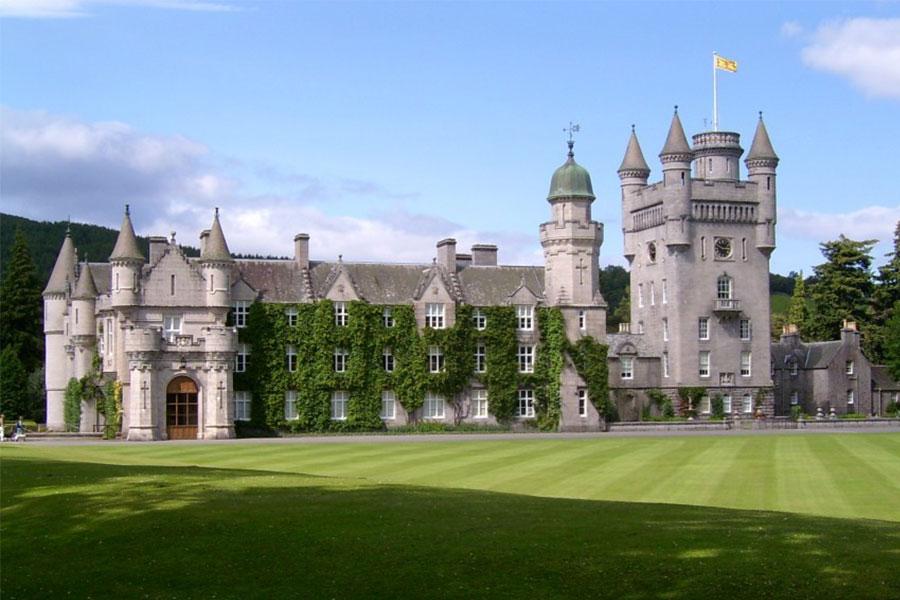The Essential Guide to Wedding Kilt Etiquette
Whether your big day is fast approaching or you’re aiming to be the perfect guest, weddings are the one occasion where you need to get it right. There is a lot to know about wedding kilt outfits and how they can be worn, we will walk you through some of the key points to consider.
You may be searching for a wedding gift or polishing the perfect Best Man’s speech. Whatever the case, perfecting the notorious Scottish kilt shouldn't be another worry to add to the list.
That’s why we’ll be advising you on the very best kilt etiquette to ensure nothing ruins this special day!
So you’ve decided which tartan to wear, but you still need to choose your wedding kilt attire.
This all depends on the formality of the day; will it be a daytime event or a formal, evening dress wedding?
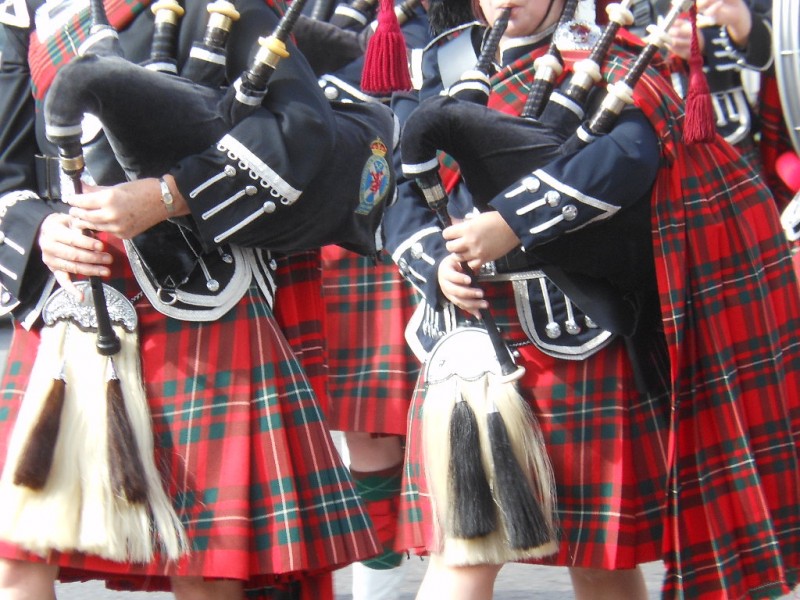
Source: Michael Coghlan
Wearing your Kilt to a Formal Wedding
For traditional, formal wedding occasions, your kilt should fit with the traditional eveningwear attire. This follows the Prince Charlie Jacket outfit.
This jacket has the recognisable three buttons down either side of the jacket and is slightly longer at the back.
To complete the look, this jacket should be accompanied with:
1. A three-buttoned waistcoat
2. A plain-coloured (usually white) shirt
3. A black, plain bow tie, or one that matches the colour of the jacket.
With these formal occasions, it’s essential that the colour of the hose (socks) compliment the outfit. Most importantly; these should never be white, though cream is acceptable.
Following on from the hose, men should either opt for black brogues, or Ghillie brogues to perfect the outfit.
The Full Dress Sporran
The formality of your dress tends to be determined by the jacket that you’re wearing. In this case, it’s the Prince Charlie jacket which requires a full dress sporran. As you would expect, these are the most formal type of sporran, featuring an ovoid body and a metal cantle.
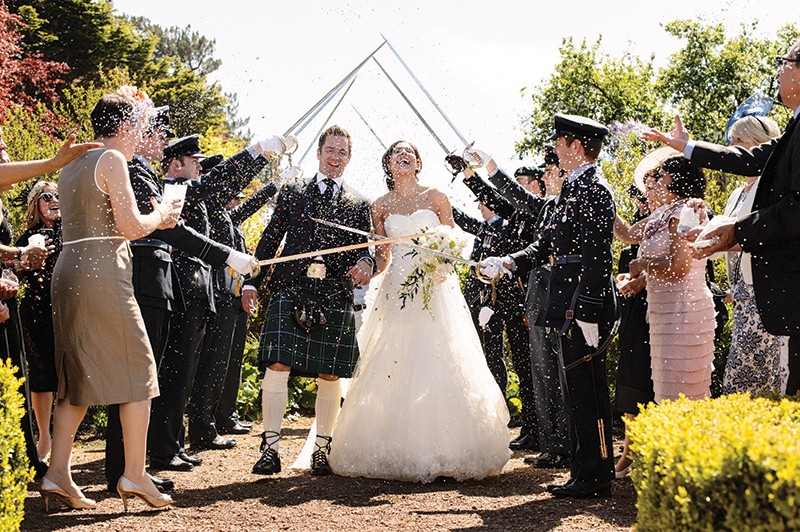
Source: Tie the Knot
Wedding Kilt as Semi-formalwear
If instead, you have chosen to go for a slightly less formal daytime wedding, then an Argyll Jacket would go very fittingly with this occasion. While these look very similar to a normal jacket, they should be fitted alongside a five-buttoned waistcoat.
To accompany this jacket and waistcoat combo, you should wear a silver grey wedding tie or one that matches your tartan. It’s worth noting that a black bow tie may be necessary for the evening alongside a plain shirt (again usually white).
Black brogues or Ghillie brogues will add the perfect finish to your outfit.
The Semi-formal Sporran
While a full dress sporran is required with eveningwear to complete the look, you only need a semi-dress sporran for daytime events. Differentiating themselves from the leather daywear sporran, they have a fur covering on the front body of the sporran.
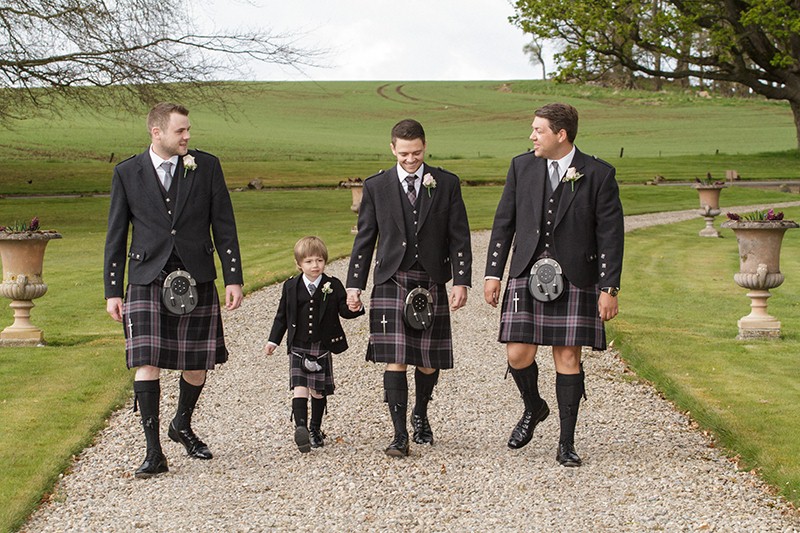
Source: Tie the Knot
Wedding Kilt Accessories
Formal or not, there are a few accessories that should accompany your kilt wherever you are.
Kilt Flashes
These include Flashes. For those of you that don’t know, flashes are used to hold up the hose, whilst also acting as a decorative piece.
The two strips of tartan which act in a decorative manner should mimic the same tartan used for the kilt. Similarly, given that they act as a supporting role, they are always placed at the top of the socks!
Kilt Pin
A Kilt Pin is a vital accessory for all kilt wear. Being traditionally placed at the bottom of the open fringed corner of the kilt, they subtly add weight to your kilt.
The style of your kilt pin is up to you. While some use it to reflect their clan heritage, with the crest of their clan present within the pin, others use it as a more decorative item, with various designs available to choose from.
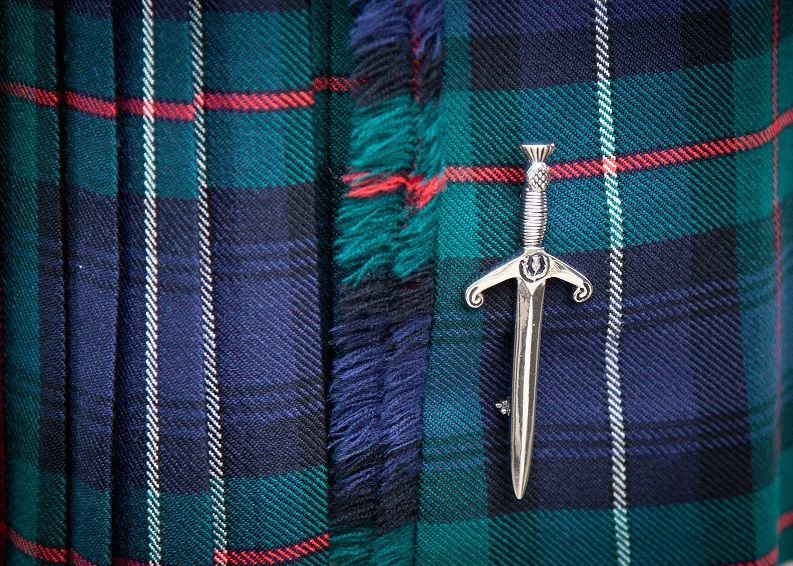
Source: Cloudberry72
Sgian Dubh
As with all kilt outfits the Sgian Dubh (a small single edged knife), should accompany the outfit. For those worrying about carrying a sharp blade along with you, this shouldn’t cause concern, as it's worn within its protective cover!
So how and where do you place the Sgian Dubh?
It's placed with the blade downwards on the outside of the leg. To know which leg to choose, you should align it with your dominant hand. It’s also important that only the hilt (handle) pokes out of the sock!
So there you are, our exclusive guide to wedding kilt etiquette. We hope we have soothed any qualms that you may have had, and we hope you have a fantastic day!
If you have any further questions, don’t hesitate to talk to us directly.

